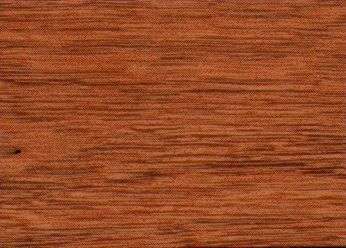
Angelin (Eucalyptus corymbosa)
Family: Myrtaceae
Common names: Angelin, Bloodwood, Cabbage angelin, Gummifera gum, Koraro, Pale bloodwood, Red bloodwood
Distributed in: Australia (Oceania and S.E. Asia)
Common uses: Agricultural implements, Boat building (general), Bridge construction, Cabinetmaking, Flooring, Fuelwood, Furniture, Heavy construction, Joinery, Light construction, Mine timbers, Paneling, Particleboard, Piling, Poles, Posts, Railroad ties
Tree size: Tree height is 20-30 m
Colors: the heart isRed, Redand the sapwoodPaler than heartwood, Well defined.The grain isWeak (figure), the textureMedium to coarse
Natural durability: Very durable, Very durable
Drying Defects: No end splitting should be expected, No twisting or warping
Ease of Drying: Slowly
Tree Identification: Bole/stem form is straight
Blunting Effect: High to severe
Boring: Fairly difficult to very difficult
Carving: Fairly Difficult to Very Difficult
Cutting Resistance: Fairly Difficult to Very Difficult to saw
Mortising: Fairly Difficult to Very Difficult
Moulding: Fairly Difficult to Very Difficult
Movement in Service: Fairly Difficult to Very Difficult
Planing: Fairly Difficult to Very Difficult
Response to hand tools: Moderate working qualities
Routing recessing: Fairly Difficult to Very Difficult
Turning: Fairly Difficult to Very Difficult
- Numerical data Metric
- Numerical data English
- Strength properties
- References
 |
 |
 |
 |
| Item |
Green |
Dry |
Metric |
| Specific Gravity |
|
|
|
| Density |
|
849 |
kg/m3 |
| Bending Strength |
714 |
1113 |
kg/cm2 |
| Crushing Strength |
356 |
529 |
kg/cm2 |
| Hardness |
|
451 |
kg |
| Impact Strength |
|
|
cm |
| Shearing Strength |
|
143 |
kg/cm2 |
| Stiffness |
111 |
129 |
1000 kg/cm2 |
| Tangential Shrinkage |
|
|
% |
| Radial Shrinkage |
3 |
|
% |
| Weight |
833 |
673 |
kg/m3 |
| Maximum Load |
|
|
cm-kg/cm3 |
| Toughness |
|
|
cm-kg |
| Static Bending |
|
|
kg/cm2 |
|
 |  |  |  | | Item | Green | Dry | English | | Bending Strength | 10164 | 15844 | psi | | Density | | 53 | lbs/ft3 | | Hardness | | 995 | lbs | | Maximum Crushing Strength | 5068 | 7533 | psi | | Shearing Strength | | 2043 | psi | | Stiffness | 1589 | 1835 | 1000 psi | | Weight | 52 | 42 | lbs/ft3 | | Radial Shrinkage | 3 | | % | | Tangential Shrinkage | 6 | | % | |
Density (dry weight) = 53-60 lbs/cu. ft
Density (dry weight) = 61-67 lbs/cu.ft
Density (dry weight) = 46-52 lbs/cu. ft.
Bending strength (MOR) = medium
Shrinkage, Tangential = small
Shrinkage, Radial = very small
Shrinkage, Radial = small
Shearing strength (parallel to grain) = medium
Modulus of Elasticity (stiffness) = medium
Max. crushing strength = high
Shrinkage, Tangential = very small
Shrinkage, Tangential = moderate
Density (dry weight) = 38-45 lbs/cu. ft.
Shrinkage, Tangential = fairly large
Shrinkage, Radial = moderate
Shearing strength (parallel to grain) = low
Modulus of Elasticity (stiffness) = low
Max. crushing strength = medium
Max. crushing strength (stiffness) = very low
Hardness (side grain) = soft
Bending strength (MOR) = high
Audas, J.W.,Native Trees of Australia,Whitcombe & Tombs PTY. LtdAustralia - Forestry and Timber Bureau,1957,Forest Trees of Australia,Australia Interior Department, Forestry and Timber BureauBanks, C.H., Schoeman, J.P., Otto, K.P.,1977,The Mechanical Properties of Timbers with particular reference to South,Africa,South African Forestry Research Institute Bulletin,(Ed.,Schoeman, J.P. 1973 & Otto K.P. 1976,No.48Boas, I.H.,1947,The Commercial Timbers of Australia - Their Properties and Uses,Council for Scientific and Industrial Research, MelbourneBolza, E., Keating, W.G.,1972,African Timbers - the Properties, Uses and Characteristics of 700 Species,C.S.I.R.O. Div. of Building ResearchCause, M.L.; Rudder, E.J. and Kynaston, W.T.,1989,Queensland Timbers Their Nomenclature, Density, and Lyctid Susceptability,Queensland Department of Forestry, Technical Pamplet No.2Erfurth, T., Rusche, H.,1976,The Marketing of Tropical Wood A. Wood Species from African Moist Forests,F.A.O. Forestry DepartmentGay, F.J., Et al,1955,Standard laboratory colonies of termites for evaluating the resistance of,timber, timber preservatives and other materials to termite attack.,C.S.I.R.O., Australia Bulletin,No.277Hall, N., Et al,1970,Forest Trees of Australia,Australian Government Publishing Service, CanberraHoward, A.L.,1948,A Manual of Timbers of the World.,Macmillan & Co. Ltd. London 3rd ed.Keating, W.G., Bolza, E.,1982,Characteristics properties and uses of timbers. South East Asia, Northern,Australia and the Pacific,C.S.I.R.O. Div. Chemical Technology,Inkata Press,1Maiden, J.H.,1917,Forestry Handbook Part II Some of the Principal Commercial Trees of New,South Wales,William Applegate Gullick, Government Printer, Sydney.Patterson, D.,1988,Commercial Timbers of the World, 5th Edition,Gower Technical PressSwabey, C.,1941,The Principal Timbers of Jamaica,Department of Science and Agriculture Jamaica Bulletin No.29Takahashi, A.,1975,Compilation of data on the Mechanical Properties of Foreign Woods (Part 2,Central and South America,Shimane University, Japan, Research Report on Foreign Wood No.4
|








